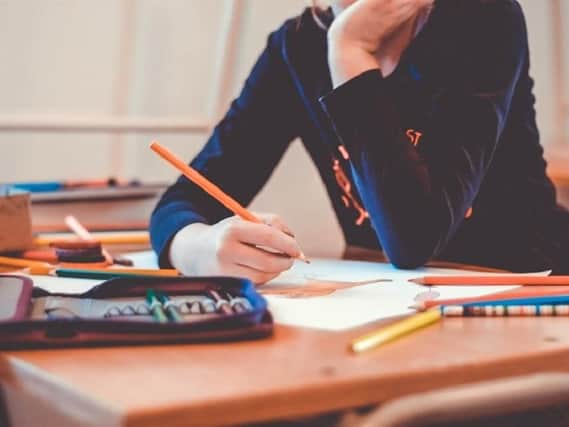One in three secondary schools face funding challenge


A report from the Education Policy Institute (EPI) indicates that school funding remains a major issue in 2019.
It states that 30.3% of local authority (LA) maintained secondary schools in England were in deficit in 2017/18, up from 8.1% in 2014.
Advertisement
Hide AdAdvertisement
Hide AdThe data indicates the average secondary school deficit was nearly half-a-million pounds (£483,569), with one in 10 of them carrying deficits that represent more than 10% of their income.
Published on Friday, School Revenue Balances in England finds that comparatively only 8% of primary schools were in the red in 2017/18.
According to the figures, 38% of primary academies were spending more than their income, compared to 51% of local authority primary schools in 2016/17.
Similarly, for secondaries, the figures were half for academies, and just below two-thirds (64%) for local authority schools.
Advertisement
Hide AdAdvertisement
Hide AdWhile the proportion of local authority schools in deficit has increased, there are a large number of schools with significant surpluses.
EPI says a substantial proportion of schools have balances deemed as "excessive" according to the Department for Education - 40.7% of primary schools, 46.4% of special schools and 34.1% of secondary schools.
It argues that around four-fifths of school deficits could be eliminated if local authorities were able to redistribute reserves from excessive balances into deficit balances.
Jon Andrews, report author and deputy head of research at EPI said: "These statistics highlight again the financial pressure that schools in England are under, particularly at secondary level.
Advertisement
Hide AdAdvertisement
Hide Ad"But they also show that a large number of schools are maintaining significant surpluses.
"The challenge for government, local authorities, and school leaders, is whether that money should now be redistributed."
EPI makes a number of recommendations in the report including that before the Spending Review, the Government should consider whether higher per pupil funding is needed, or if efficiency savings can make up part of the current shortfalls.
It also suggests further consideration should be given to what extra help or advice can be offered to schools facing large deficits.
Advertisement
Hide AdAdvertisement
Hide AdGeoff Barton, general secretary of the Association of School and College Leaders, said: "The startling figure of 30% of maintained secondaries in deficit in 2017/18, and the dramatic increase in this percentage since 2014, is evidence that many schools have hit the financial cliff edge that we have repeatedly warned is looming.
"This is a direct result of government under-funding and the current situation is simply unsustainable."
He added: "We note the EPI's findings about schools with 'excess surpluses'.
"It is important to understand that it is prudent financial management to carry forward a surplus when possible in order to provide a contingency to cover unforeseen expenditure, and the fact that so many schools cannot now do so is cause for grave concern.
Advertisement
Hide AdAdvertisement
Hide Ad"What is clear is that the current trend is one of increasing deficits and unless action is taken to improve the level of funding, it is highly likely that educational standards will deteriorate."
Councillor Anntoinette Bramble, chairwoman of the Local Government Association's Children and Young People Board, said: "Council-maintained schools can, if absolutely necessary, run up a deficit on licence from the local authority, providing there is a full plan to show how the finances are going to be brought back into balance as soon as possible.
"This tends to happen if, for example, maintained schools have had to expand to meet demand for school places in their areas and are waiting for government funding to catch up with increased numbers of pupils.
"However, as the report shows, it is important to note that there are more schools with positive balances than in deficit."